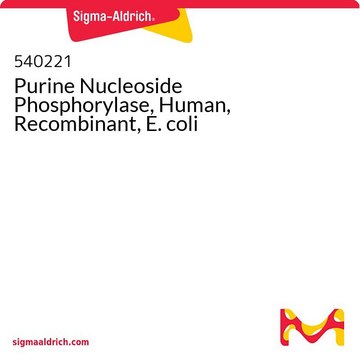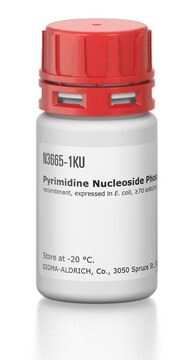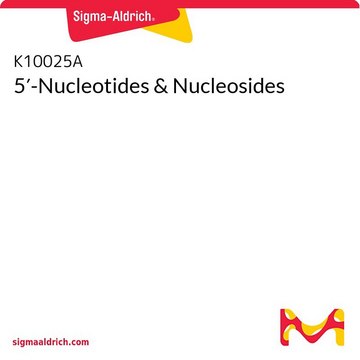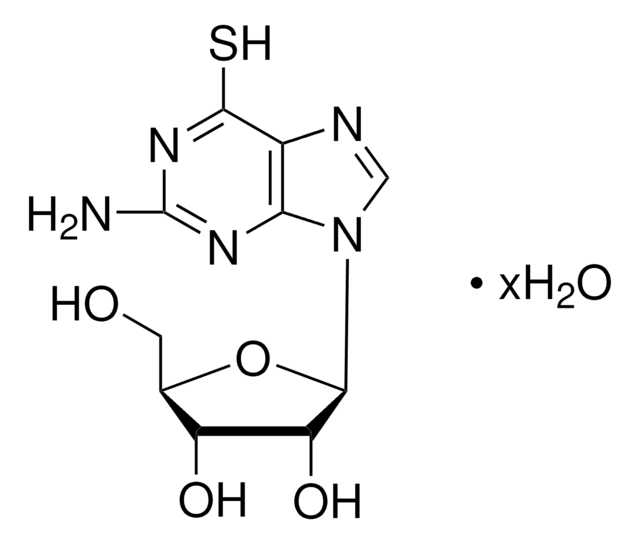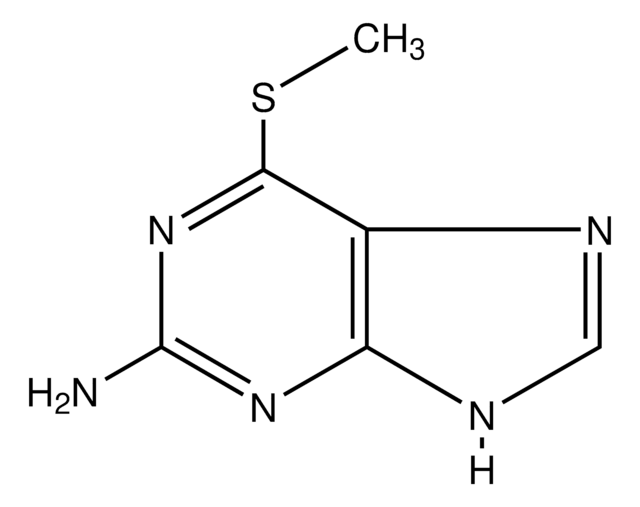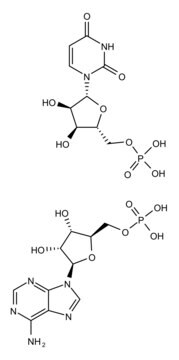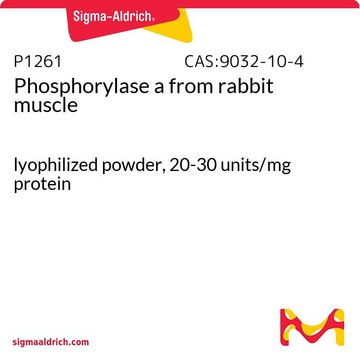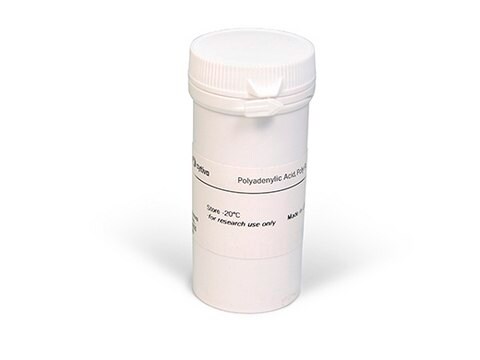Wszystkie zdjęcia(2)
Kluczowe dokumenty
N9914
Polynucleotide phosphorylase from Synechocystis sp.
recombinant, expressed in E. coli
Synonim(y):
PNPase, Polyribonucleotide Nucleotidyltransferase
Zaloguj sięWyświetlanie cen organizacyjnych i kontraktowych
About This Item
Polecane produkty
pochodzenie biologiczne
bacterial (Synechocystis sp.)
Poziom jakości
rekombinowane
expressed in E. coli
opis
Histidine tagged
Próba
90% (SDS-PAGE)
Formularz
solution
aktywność właściwa
≥500 units/mg protein
masa cząsteczkowa
85 kDa
metody
cell based assay: suitable
przydatność
suitable for molecular biology
Zastosowanie
cell analysis
Warunki transportu
dry ice
temp. przechowywania
−70°C
Szukasz podobnych produktów? Odwiedź Przewodnik dotyczący porównywania produktów
Opis ogólny
Fosforylaza polinukleotydowa w chloroplastach szpinaku działa jako egzonukleaza i polimeraza poli(A).
Zastosowanie
Fosforylaza polinukleotydowa została wykorzystana w badaniu, aby odkryć, że główną funkcją PNPazy jest synteza CDP. Został on również wykorzystany w badaniu w celu zbadania enzymu odpowiedzialnego za syntezę ogona 3′ RNA w S. coelicolor.
Działania biochem./fizjol.
Fosforylaza polinukleotydowa lokalizuje się w przestrzeni międzybłonowej mitochondriów i pełni krytyczną funkcję w regulacji homeostazy mitochondriów w komórkach ludzkich.
Polynucleotide phosphorylase (PNPase) is a bifunctional enzyme with a phosphorolytic 3′ to 5′ exoribonuclease activity and a 3′-terminal oligonucleotide polymerase activity.
Definicja jednostki
One unit will polymerize 1.0 μmole of ADP, releasing 1.0 μmole of inorganic phosphate in 15 minutes, at pH 9.1 at 37 °C.
Supplied as a solution in 20 mM Hepes buffer pH 7.9, 0.1 mM EDTA, 2 mM DTT, 12.5 mM MgCl2, 60 mM KCl, 20% (w/v) Glycerol
Ta strona może zawierać tekst przetłumaczony maszynowo.
Kod klasy składowania
12 - Non Combustible Liquids
Klasa zagrożenia wodnego (WGK)
WGK 1
Temperatura zapłonu (°F)
Not applicable
Temperatura zapłonu (°C)
Not applicable
Wybierz jedną z najnowszych wersji:
Masz już ten produkt?
Dokumenty związane z niedawno zakupionymi produktami zostały zamieszczone w Bibliotece dokumentów.
Klienci oglądali również te produkty
Patricia Bralley et al.
Microbiology (Reading, England), 152(Pt 3), 627-636 (2006-03-04)
As in other bacteria, 3'-tails are added post-transcriptionally to Streptomyces coelicolor RNA. These tails are heteropolymeric, and although there are several candidates, the enzyme responsible for their synthesis has not been definitively identified. This paper reports on three candidates for
Ruth Rott et al.
The Journal of biological chemistry, 278(18), 15771-15777 (2003-02-26)
The mechanism of RNA degradation in Escherichia coli involves endonucleolytic cleavage, polyadenylation of the cleavage product by poly(A) polymerase, and exonucleolytic degradation by the exoribonucleases, polynucleotide phosphorylase (PNPase) and RNase II. The poly(A) tails are homogenous, containing only adenosines in
A Danchin
DNA research : an international journal for rapid publication of reports on genes and genomes, 4(1), 9-18 (1997-02-28)
Genome comparison permits identification of chromosome regions conserved during evolution. Bacillus subtilis and Escherichia coli are so distant that there exists very few conserved landmarks in their genome organisation. Analysis of the conserved cmk rpsA cluster pinpointed the importance of
G G Liou et al.
Proceedings of the National Academy of Sciences of the United States of America, 98(1), 63-68 (2001-01-03)
RNase E isolated from Escherichia coli is contained in a multicomponent "degradosome" complex with other proteins implicated in RNA decay. Earlier work has shown that the C-terminal region of RNase E is a scaffold for the binding of degradosome components
Peter Lengyel
Annual review of microbiology, 66, 27-38 (2012-09-22)
2011 marked the fiftieth anniversary of breaking the genetic code in 1961. Marshall Nirenberg, the National Institutes of Health (NIH) scientist who was awarded the Nobel Prize in Physiology or Medicine in 1968 for his role in deciphering the code
Nasz zespół naukowców ma doświadczenie we wszystkich obszarach badań, w tym w naukach przyrodniczych, materiałoznawstwie, syntezie chemicznej, chromatografii, analityce i wielu innych dziedzinach.
Skontaktuj się z zespołem ds. pomocy technicznej
